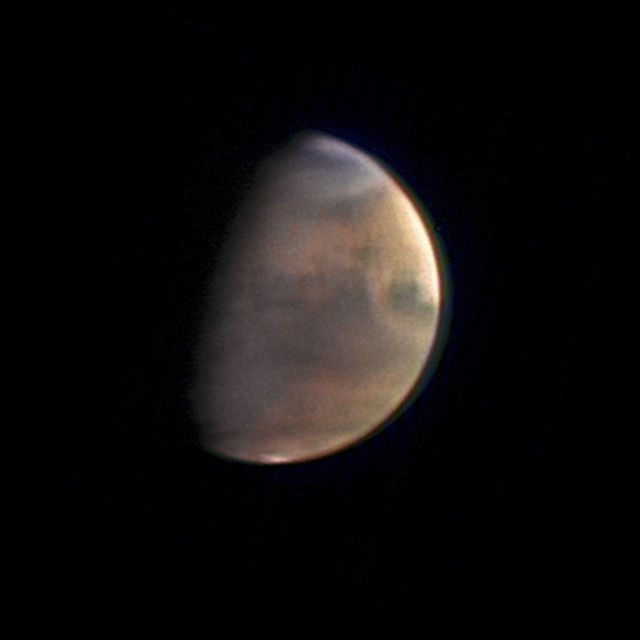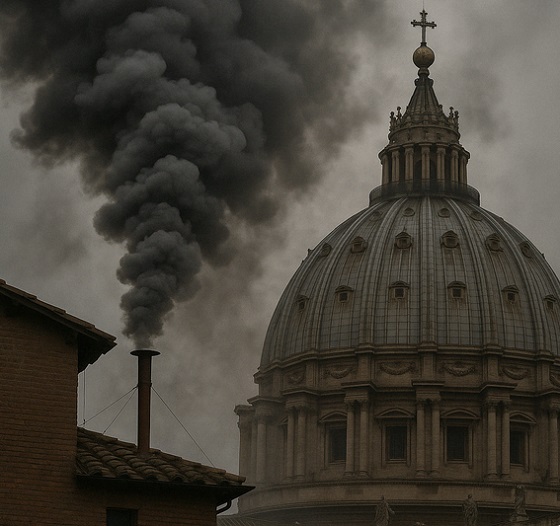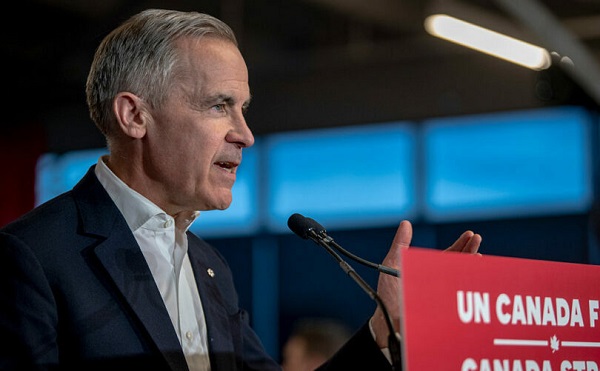International
First-of-its-kind Mars livestream by ESA spacecraft interrupted at times by rain on Earth

CAPE CANAVERAL, Fla. (AP) — A European spacecraft around Mars sent its first livestream from the red planet to Earth on Friday to mark the 20th anniversary of its launch, but rain in Spain interfered at times.
The European Space Agency broadcast the livestream with views courtesy of its Mars Express, launched by a Russian rocket from Kazakhstan in 2003.
It took nearly 17 minutes for each picture to reach Earth, nearly 200 million miles (300 million kilometers) away, and another minute to get through the ground stations.
The transmission was disrupted at times by rainy weather at the deep space-relay antenna in Spain.
Still, enough images made it through to delight the European space officials hosting the hourlong livestream. The initial views showed about one-third of Mars, which gradually grew bigger in the frames before shrinking again as the spacecraft circled the planet. White clouds could clearly be seen in some of the shots.
“If you were currently sitting on board Mars Express … this is what you would be seeing,” said Simon Wood, the mission’s spacecraft operations engineer. “We typically don’t normally get images in this way.”
Pictures and other data usually are stored aboard the spacecraft and later transmitted to Earth, according to Wood, when the spacecraft’s antenna can be pointed this way.
Near real-time footage from so far away is “rather rare,” according to ESA. The agency pointed to the live broadcasts by the Apollo moonwalkers more than a half-century ago and, more recently, live snippets from spacecraft deliberately crashing into the moon and an asteroid.
“These missions were all pretty close to home and others farther away sent perhaps an image or two in near real-time. When it comes to a lengthy livestream from deep space, this is a first,” ESA said in a statement before the event.
The rain on the plains in Spain cut into the number of pictures shown. ESA devoted only an hour to the livestream because it did not want to overload the spacecraft’s batteries.
Mars Express traveled to the red planet with a lander, dubbed Beagle-2, which lost contact with Earth as it attempted to touch down on the Martian surface.
More than a decade later, NASA’s Mars Reconnaissance Orbiter captured pictures of Beagle-2. Although it made it to the surface, the lander’s solar panels didn’t fully unfurl.
___
2025 Federal Election
The Anhui Convergence: Chinese United Front Network Surfaces in Australian and Canadian Elections

Revealing Beijing’s Transnational Influence Strategy
From Markham to Sydney: Tracing the CCP’s Overseas Influence Web
In the waning days of two federal election campaigns on opposite sides of the world, striking patterns of Chinese Communist Party election influence and political networking are surfacing—all tied to an increasingly scrutinized Chinese diaspora group with roots in the province of Anhui.
In Australia, Liberal candidate Scott Yung opened a business gala co-hosted by the Anhui Association of Sydney, a group officially designated by Beijing as an “overseas Chinese liaison station,” as reported by James King of 7NEWS. King identifies the Anhui group as part of a global network directed by Beijing’s United Front Work Department, an influence arm of the Chinese state that aims to shape foreign societies through elite capture and soft power.
King’s reporting is reigniting global concern over Chinese foreign interference, of the type previously exposed by The Bureau in Canada, which revealed that several Liberal Party of Canada officials, deeply involved in fundraising and election campaigning in the Greater Toronto Area, also serve as directors of an Anhui-based United Front “friendship” group with ties to a notorious underground casino operation.
That same group shares overlapping members and leadership with the Jiangsu Commerce Council of Canada (JCCC), a United Front-affiliated organization that controversially met with Liberal leadership candidate Mark Carney in January.
In the 7NEWS report, Yung is shown speaking—as a representative of Opposition Leader Peter Dutton—at a charity fundraiser co-hosted by the Anhui Association, a group previously celebrated by Beijing for supporting China’s territorial claims over Taiwan. According to King, the Anhui Association of Sydney was one of 14 overseas Chinese organizations designated in 2016 by the Anhui Foreign Affairs Office to serve as a liaison station advancing Beijing’s international strategy. Government documents show the group received AUD $200,000 annually, with instructions to “integrate overseas Chinese resources” into Anhui’s economic and social development.
Yung’s appearance on behalf of Liberal leader Dutton at an event ultimately backed by Beijing echoed mounting concerns surrounding Labor Prime Minister Anthony Albanese, his opponent in Australia’s May election.
Just weeks earlier, The Australian revealed that Albanese had dined with the vice-president of a United Front group at a Labor fundraiser—prompting sharp criticism from Liberal campaign spokesperson James Paterson, the Shadow Minister for Home Affairs. Paterson said Albanese had “all sorts of serious questions” to answer, warning that “Xi Jinping has described the United Front Work Department as the Party’s magic weapon,” according to 7NEWS.
The news organization emphasized that it “does not suggest that the Anhui Association of Sydney, its former chairman, or any of its associates have committed foreign interference or otherwise acted illegally,” noting that it is legal in Australia to act on behalf of a foreign government—so long as those actions are not covert, deceptive, or threatening.
But King’s investigation underscores a broader concern—echoed in reporting from Canada and New Zealand—that Chinese diaspora organizations, operating through the CCP’s United Front system, are being strategically leveraged by Beijing’s intelligence and foreign policy arms to fund major political parties across liberal democracies, influence parliamentary policy in line with CCP objectives, and shape leadership pipelines, including the placement of favored candidates and bureaucrats into sensitive government roles.
This strategy finds a near-identical expression in Canada, where intelligence officials in Toronto have long monitored a related organization: the Hefei Friendship Association, which maintains structural ties—via Anhui province United Front entities—to the Sydney group. Founded prior to 2012 by alleged underground casino operator Wei Wei, the Hefei group is based in Markham, Ontario, and plays a central role in an ongoing CSIS investigation into foreign interference.
Documents and sources reviewed by The Bureau confirm that the Hefei Friendship Association shares leadership with the Jiangsu Commerce Council of Canada (JCCC), a group openly tied to provincial-level United Front Work Department officials in Jiangsu, the province adjacent to Anhui. In earlier reporting on the Markham illegal casino network—widely referred to as the 5 Decourcy case—The Bureau cited an investigator with direct knowledge of what intelligence sources describe as a botched national security probe. The inquiry focused on Canadian politicians attending the casino alongside Chinese community leaders affiliated with Beijing’s overseas influence operations.
One legal source close to the file summarized the issue bluntly: “The national security and intelligence apparatus of this country is ineffective and broken. I’m in disbelief at the lack of ethics and enforcement around government officials.”
According to national security sources, the 5 Decourcy mansion-casino is viewed as just one visible node in a transnational system stretching from Toronto to Vancouver—a system that includes organized crime networks, unregistered lobbying, and foreign-aligned political financing. A CSIS source confirmed that the operation—which allegedly entertained politicians—fits Beijing’s model of leveraging transnational organized crime to advance political goals abroad. That model, they noted, closely mirrors warnings from Australia’s ASIO, which has linked similar figures in the real estate sector to major donations to all three of Australia’s major political parties, including those led by Dutton and Albanese.
Further investigation by The Bureau reveals deeper overlap between the Anhui United Front networks and the Jiangsu group that met with Mark Carney in January. Among the co-directors of the Anhui United Front group—pictured in meetings and named in documents alongside Wei Wei—is a prominent Markham-area Liberal riding official, involved in fundraising for Justin Trudeau. That same individual holds a leadership role with the JCCC, which met with Carney in a meeting that was initially denied, then downplayed.
Images reviewed by The Bureau show Wei Wei seated beside a Liberal Party politician and community organizer at a private association gathering, while another Liberal official with ties to the JCCC stands behind them. A second photo, taken inside Wei Wei’s residence, shows additional Liberal figures affiliated with Anhui- and Jiangsu-linked United Front community groups.
Documents obtained by King show that the Anhui Association of Sydney was tasked to “strive to closely integrate overseas Chinese affairs with the province’s economic and social development,” according to the director of the Anhui Foreign Affairs and Overseas Chinese Affairs Office. The Bureau has reviewed similar language in Canadian documents signed by JCCC leaders, including the Hefei Friendship Association director tied to Wei Wei—reinforcing that both the Canadian and Australian networks appear to operate under direct, formal tasking from provincial CCP entities.
As these revelations now resurface in the middle of Canada’s federal election campaign, they echo with findings in New Zealand. The 2018 political implosion involving MP Jami-Lee Ross offered a cautionary tale of how foreign-aligned networks can entangle party finances, diaspora outreach, and internal leadership struggles.
Ross, once a rising star in New Zealand’s National Party, secretly recorded party leader Simon Bridges discussing a controversial $100,000 donation, which Ross alleged was tied to Chinese business interests. The scandal shattered National’s leadership and exposed vulnerabilities in its campaign finance ecosystem. In an interview with Stuff, Ross described how his relationships with Chinese community leaders, while partly grounded in legitimate social engagement, also became channels for Beijing’s political aims.
“These [Chinese] associations, which bring together the expat Chinese community, they probably do have a good social function in many regards,” Ross said. “But there’s a wider agenda. And the wider agenda is influencing political parties. And by influencing political parties, you end up influencing the government of the day. What average New Zealander out there can get the leadership of a political party to go to their home for dinner? What average person out there could just click their fingers and command 10 MPs to come to their event? Most people can’t. Money buys their influence.”
International
Pope Francis Got Canadian History Wrong

From the Frontier Centre for Public Policy
Pope Francis’s careless genocide comment gave activists the fuel they needed, and Parliament rushed to judgment without examining the facts
Many Catholics will grieve the death of Pope Francis. But not all.
That’s because Francis was arguably the most political Pope in recent memory. Depending on your definition, he was either a socialist or a communist. There wasn’t a leftist leader or cause he didn’t embrace, and few conservative ones he supported. He regularly weighed in on progressive issues like climate change and offered political opinions, even when he seemed to lack a full understanding of the topic.
One such issue was Canadian history.
In 2021, the Tk’emlúps te Secwépemc First Nation announced that ground-penetrating radar had detected anomalies near the former Kamloops Indian Residential School, interpreted by some as possible unmarked graves of children. The claim made international headlines and sparked widespread outrage, although no remains have ever been unearthed.
During a late-night flight, the ailing octogenarian Pope, seemingly charmed by a young reporter, described Canada’s residential schools as “genocide,” a departure from his earlier, carefully prepared statement, which made no such accusation and echoed apologies offered by his predecessors. Those statements expressed regret for harm done but also acknowledged the good work of countless priests and nuns who dedicated their lives to educating Indigenous children.
In a moment of startling informality, Pope Francis appeared to accept the now-disputed Kamloops story as fact, effectively accusing thousands of priests, nuns, teachers and support workers—both Indigenous and non-Indigenous—of committing genocide. He appeared to accept at face value the now-disputed Kamloops story of secret burials and sinister deaths. In doing so, he didn’t just slander individuals—he changed Canadian history.
“Yes, it’s a technical word, genocide. I didn’t use it because it didn’t come to mind. But yes, I described it. Yes, it’s a genocide,” Francis said in July.
Indigenous activists wasted no time. They realized those words were exactly what they needed. Their initial genocide motion in Parliament—based on the Kamloops claim of 215 hidden graves—had failed. But with the Pope’s remarks, the political climate shifted.
NDP MP Leah Gazan led the charge. She had introduced a motion after the Kamloops claim first surfaced. She returned the following year with the same proposal, and this time, the Pope’s comments gave it new weight.
The motion declared Canada’s treatment of Indigenous children in residential schools as genocide—a declaration that, while not legally binding, carries moral and political weight. It passed quickly and without debate.
The irony? The very same activists who had earlier promoted deeply anti-Catholic conspiracy theories about atrocities committed by priests and nuns—stories that fuelled church burnings across Canada—were now treating every word from the Pope’s mouth as gospel. Non-believers appeared to be embracing some version of papal infallibility (a Catholic doctrine that, in specific cases, the Pope’s declarations are considered free from error)—if only when it suited them.
Meanwhile, Parliament failed to do its homework. Elected representatives never seriously investigated the many holes in the Kamloops story. Despite the global headlines, no excavations at the Kamloops site have confirmed the presence of remains. Multiple independent experts have raised concerns about the methodology and public interpretation of the findings.
Yet MPs allowed themselves to be swayed. Incredibly, they spent just 47 seconds debating and approving a motion that condemned their own country for genocide.
Much has been written about the lack of evidence behind the Kamloops claim. Suffice it to say, the “remains of 215 children” turned out to be an old sewage trench. Think about that—our nation was convicted of genocide based on a sewage trench.
Earlier popes took a more thoughtful approach. They acknowledged that wrongs were committed, that abuse occurred, and that some individuals within the system failed. But they also recognized that the goal of educating Indigenous children was legitimate, and that many students gained literacy and language skills that served them for life.
Those are the papal perspectives worth remembering.
Pope Francis did much good in his life, and many will reflect fondly on his legacy. But when it comes to Canada, his careless and misinformed comments on genocide did real harm. Let’s hope the next Pope is more careful with his late-night musings.
Brian Giesbrecht is a retired judge and a senior fellow at the Frontier Centre for Public Policy.
-

 2025 Federal Election2 days ago
2025 Federal Election2 days agoMark Carney Wants You to Forget He Clearly Opposes the Development and Export of Canada’s Natural Resources
-

 International2 days ago
International2 days agoPope Francis’ body on display at the Vatican until Friday
-

 Business2 days ago
Business2 days agoHudson’s Bay Bid Raises Red Flags Over Foreign Influence
-

 2025 Federal Election2 days ago
2025 Federal Election2 days agoCanada’s pipeline builders ready to get to work
-

 2025 Federal Election1 day ago
2025 Federal Election1 day agoFormer WEF insider accuses Mark Carney of using fear tactics to usher globalism into Canada
-

 2025 Federal Election13 hours ago
2025 Federal Election13 hours agoCarney’s Hidden Climate Finance Agenda
-

 COVID-191 day ago
COVID-191 day agoRFK Jr. Launches Long-Awaited Offensive Against COVID-19 mRNA Shots
-

 2025 Federal Election2 days ago
2025 Federal Election2 days agoCanada’s press tries to turn the gender debate into a non-issue, pretend it’s not happening




